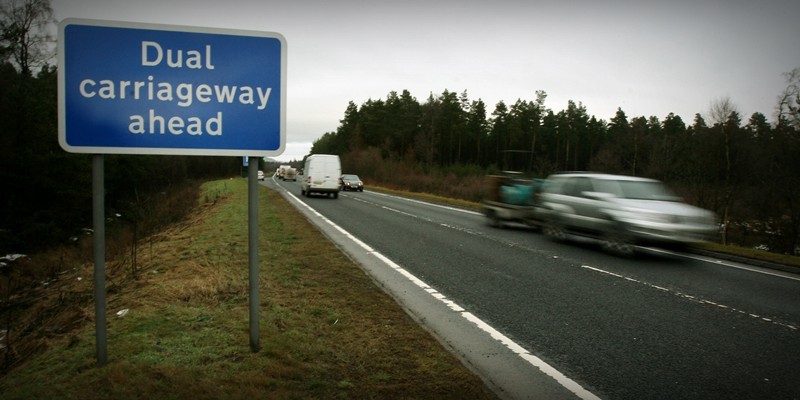A motoring organisation has backed the dualling of the A9 from Perth to Inverness, calling it ”great news”.
Institute of Advanced Motorists policy and research director Neil Greig told The Courier it is vital to dual sections of the road, particularly from Dunkeld, where an accident took place on December 5.
A three-vehicle collision led to a pregnant woman driver escaping injury, with a van driver suffering a broken pelvis and chest injuries. The woman’s car burst into flames after the collision a mile north of Dalguise.
The £3bn upgrading of the A9 was announced last week by the Scottish Government as part of its new capital spending programme, set to cost around £10bn.
The dualling is estimated to begin in 2017 and the first stretch to be worked on will be between Luncarty and Birnam.
Mr Greig said: ”This is great news. However, clearly, it is a long-term commitment and is not to going to happen overnight.”
He added: ”Our priority has been to see the A9 dualled from Pitlochry to Perth, particularly from Dunkeld in the first instance. This stretch of road sees great ‘platooning’ of traffic behind vehicles and is greater towards Perth.
”Traffic builds up there is a lack of overtaking on some stretches and you have articulated lorries who have a 40mph speed limit.”
Mr Greig said drivers have problems overtaking on the A9, but dualling would give ”greater flexibility”.
He said: ”The Scottish Government have got this right. Inverness is growing and there is an increase in the traffic on the A9. Also, the rail system can’t meet the requirements of traffic demands so dualling is needed.”
Mr Greig added that certain measures only make problems worse.
He said: ”Many junctions are the ‘two plus one’ type two lanes which open up and then go back to one. These are located near Kingussie on the A9 but people are looking to overtake on these stretches and people often come off them too fast.”
The spending plans includes 54 major infrastructure projects and 33 programmes covering schools, hospitals and housing.
The government wants the entire network dualled by 2030.
